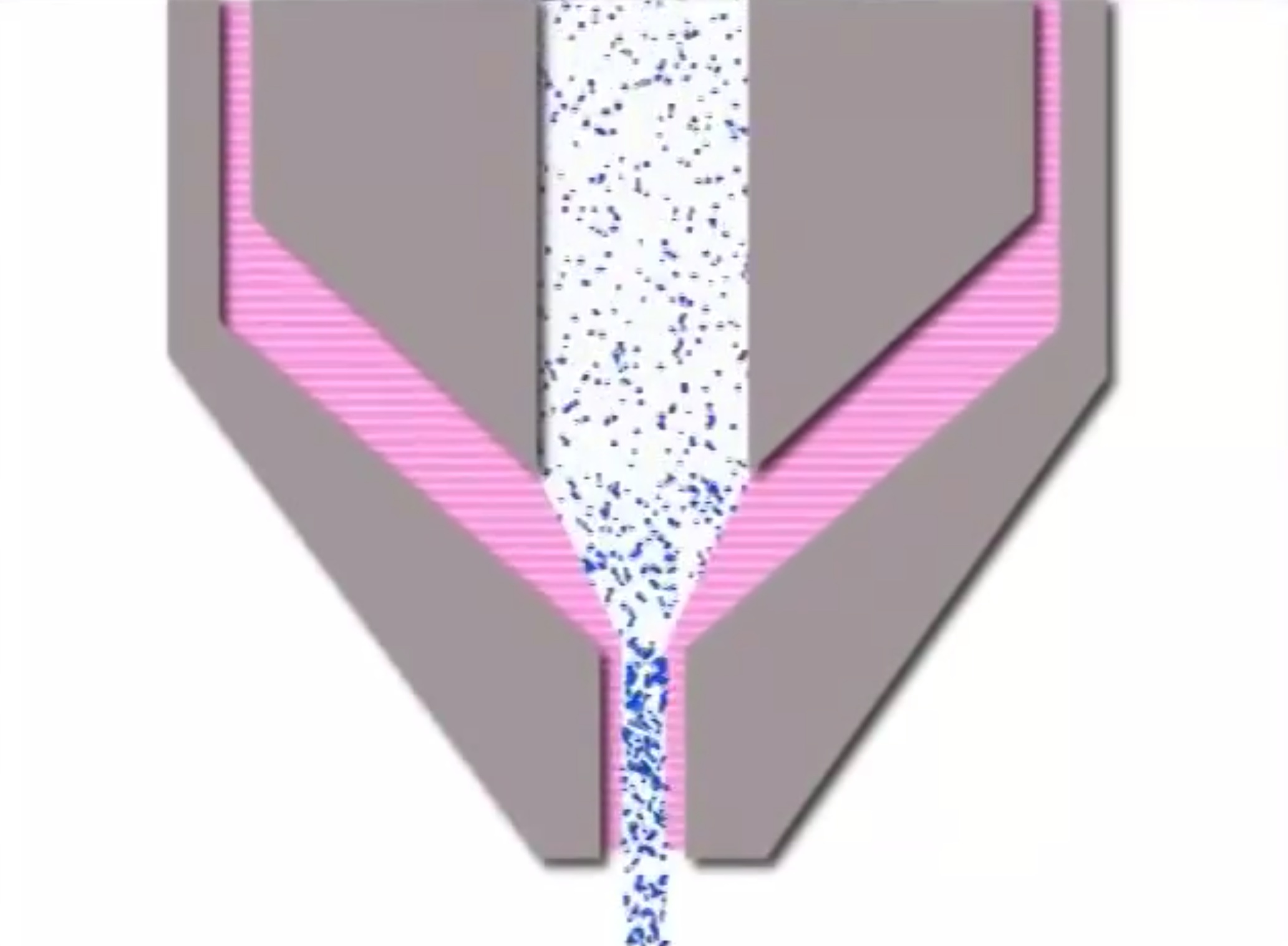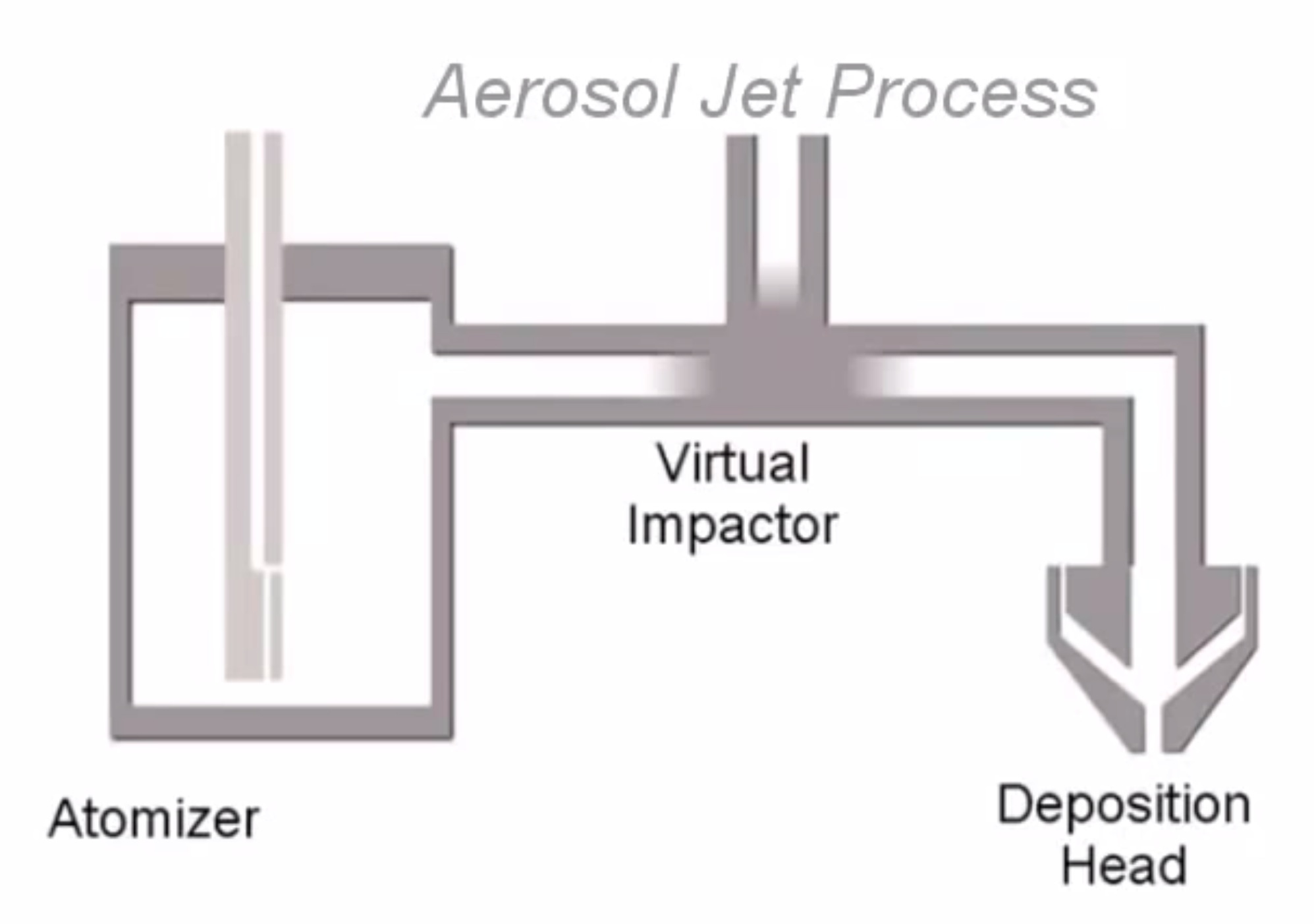
Industrial 3D printer manufacturer Optomec will be delivering an Aerosol Jet Quad Print Engine to the Factory Automation and Production Systems (FAPS) Institute at Friedrich-Alexander-Universität Erlangen-Nürnberg to print artificial muscles.
The Optomec system is quite different from the processes used by personal 3D printers. The approach jets a stream of atomized particles at a surface to form deposits.
It’s quite sophisticated, as you can see in the video below. Above is a conceptual diagram of their process. A material is atomized in a chamber, then excess gas is removed with a mysterious “Virtual Impact” step. This makes a gas infused with a dense concentration of the desired material. Additional gas coursing through the extruder ensures the material flows toward the target surface in crisp fashion. Many different kinds of materials can be deposited using this process with high accuracy.
FAPS has acquired a quad version of Optomec’s aerosol system, meaning they can deposit up to four different atomized materials in one print job – with an accuracy of up to 10 microns, or 0.010mm.
Their goal is to produce “dielectric elastomer actuators”, or DEAs. These are, in fact, artificial muscles. The trick is to layer on different materials in a precise manner – hence the use of Optomec’s equipment. They’re expected to print silicone and carbon nanotube layers.
Don’t look for this approach to be implemented in personal 3D printing equipment anytime soon. Optomec has numerous patents on the process, which likely don’t expire for years. And even then, atomization of tiny particles is not something you’d attempt without a considerable air control system to make it safe.
Via BusinessWire


